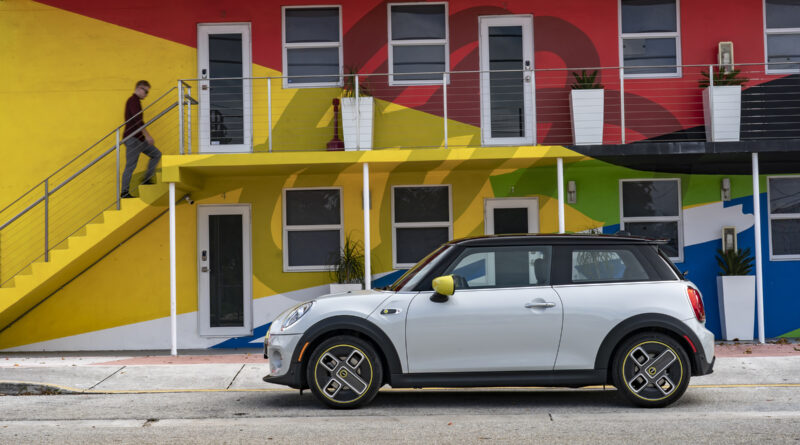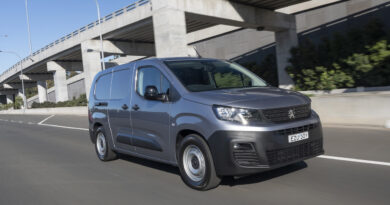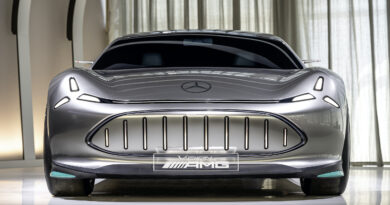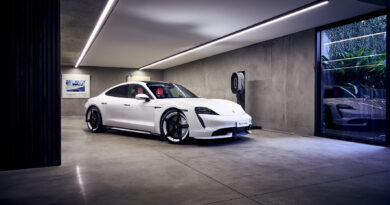2020 Mini Electric review
The threat of an all-electric Mini has been looming for years, with motor show concepts and limited run models gracing European roads.
Since 2019 Mini has offered a PHEV version of the Countryman baby SUV, known as the Mini Countryman Hybrid.
But BMW-owned Mini has just got more serious with its imminent electric onslaught with the arrival of the first Mini Electric, the brand’s first BEV.

The unimaginative name teams the fun-loving Mini design with an all-electric drivetrain.
Value
It’s a single model that makes up the Mini Electric ‘lineup’, for now at least.
Known as the First Edition, it sells from $59,900 drive-away and is available in a choice of four colours (white, black, red and British racing green), each with lime-infused yellow highlights so that no one misses you’re driving a slightly different Mini to the neighbours.

Mini calls for a $2000 deposit, presumably to ensure would-be buyers are serious before pressing the button on an order. Even then, there’s something of a waiting list; Mini says the first cars into the country are accounted for and orders are being taken for 2021.
As part of that First Edition pack the Mini Electric comes with a head-up display, wireless phone charging, sports heated front seats and a crisp and punchy 13-speaker Harman Kardon sound system.
There’s also a digital instrument cluster and in the centre of the dash is an 8.8-inch screen incorporating Apple CarPlay and Android Auto and a truncated reversing camera.
As with electrified BMWs (Mini is owned by BMW), the battery warranty is skinny on the kilometres, covering only the first 100,000km of driving. For those doing less than the average annual kilometres the warranty extends for eight years.
Inside
There’s a liberal dose of old school Mini in the future-thinking Electric, from toggle switches to a plethora of circles covering the ventilation controls, air vents, button clusters and door handles. What was the enormous speedo taking pride of place in the centre of the dash has been partially crammed with a horizontal 8.8-inch infotainment screen. It’s not a natural fit…
There are buttons below it, including excellent programmable favourites and some audio controls. But the rest of the infotainment controls are way down in the centre console requiring a downward glance; anyone familiar with BMW’s iDrive will instantly recognise their configuration.


Being based on the three-door Mini instantly limits the Electric’s appeal; while two rear seats have respectable head room courtesy of the boxy Mini hatch silhouette, there’s seat-flipping and human-contorting to get back there. The boot, too, is stubby, although an underfloor compartment adds some useful space, at least if you decide to leave the chunky charging cables at home.
Up front there’s ample space for two and the Mini Electric settles into its element as a singles or couples machine. Seats are nicely supportive and the retro infusion reinforces the character.


And among the retro are touches of modern, including a splash of carbon fibre-inspired material across the dash and the digital instrument cluster, albeit one with no shroud above it; the matte finish ensures no glare from the sun. It’s a shame the 5.5-inch instrument cluster can’t be customised more, instead locked with a charge gauge to the right and speedo in the centre, largely mimicking the analogue displays in other Minis.
A three-spoke steering wheel looks the business and those limey-green highlights make occasional appearances inside, including for the start-stop toggle ignition.
Performance and efficiency
There’s a single electric motor powering the front wheels. It’s pretty basic stuff with 135kW and 270Nm to play with.
Solid numbers, but acceleration is perky rather than potent, in part because of the portly body with the batteries nudging the Mini’s weight up to nearly 1.4 tonnes.
The generous torque spread – with clean, effortless pull from any throttle application – is its defining character.


Topping 100km/h takes a claimed 7.3 seconds, around have a second better than the regular Mini Cooper with a three-cylinder turbo. Those wanting a high-performance Mini will be more tempted by the fiery JCW, which can reach 100km/h in 6.1 seconds.
Still, there’s enough to chirp the front wheels occasionally, although that extra weight mostly keeps things planted.
A lot of the time you won’t need to worry about the brake pedal, either. In the “high energy” regenerative braking mode you can use it as a one-pedal car, even coming to a stop when needed.
But it also calls for lots of accelerator applications to keep things rolling along, even when cruising.
Our preference was the “low energy” regen, which provided a more natural feel and made city commuting more relaxed.
Mini claims 233km of range, which may be true in a laboratory but doesn’t translate to the real world. Out brief experience suggests closer to 170km in everyday driving.
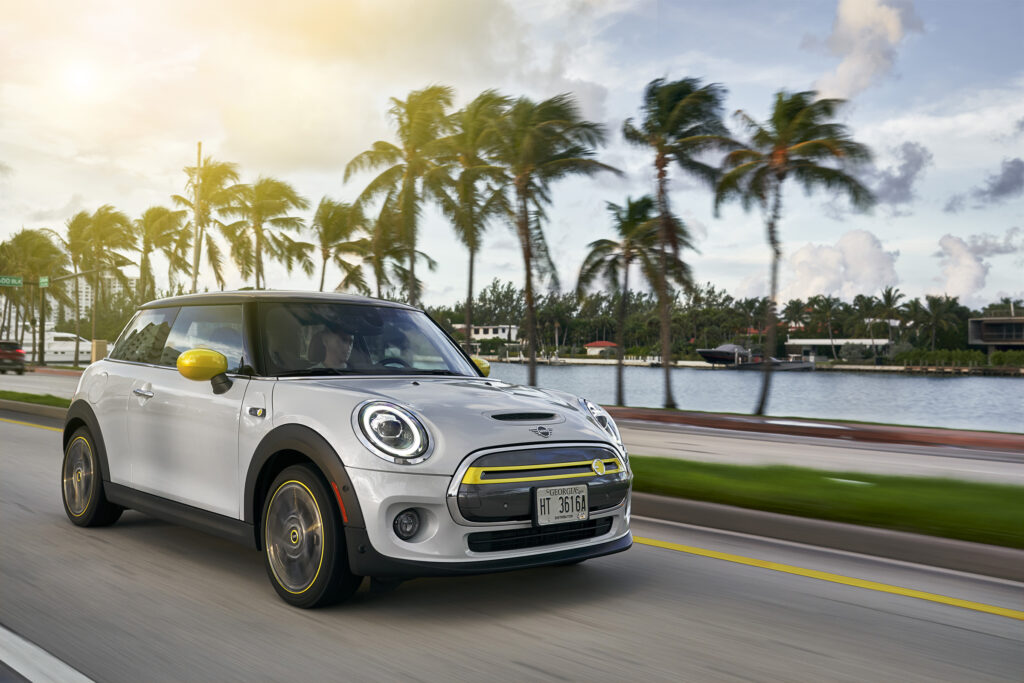

That’s fine for predominantly around-town running, but will limit the Mini’s usefulness for those planning a weekend away. Best to keep the destination within 80-odd kays of home base – unless you can find easy access to charging.
When you are tootling around town the Mini Electric is also accompanied by a futuristic whirring sound outside the car to let pedestrians know of its imminent arrival. Not great for silent garage getaways!
Charging
The Mini Electric’s lithium-ion battery capacity is a modest 32.6kWh. That’s small by BEV standards and accounts for that relatively low driving range.
Interstate trips would require plenty of planning and sufficient downtime to keep the electrons flowing.
Charging can be done at home with a Type 2 plug providing up to 11kW of AC electricity.
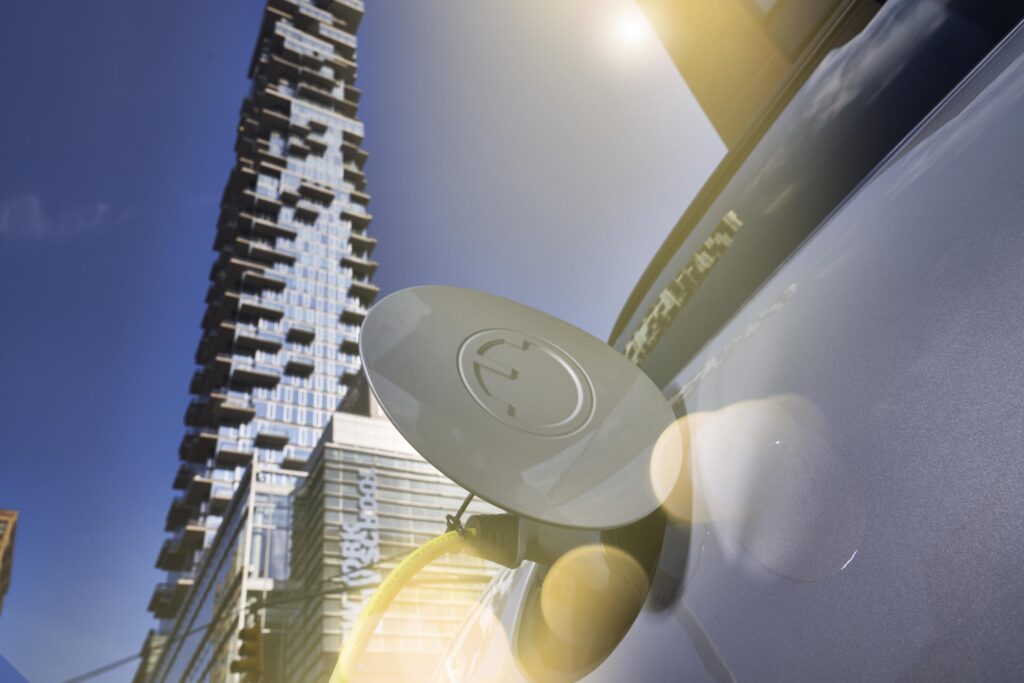

Fast charges at public charging stations can accept a DC charge of up to 50kW through a CCS plug, which provides an 80 percent charge in as little as 36 minutes.
Claimed consumption is 15.6kWh per 100km and we came refreshingly close to that in everyday driving, sometimes even slotting below it.
Ride and handling
Sharp steering and darty dynamics are Mini staples – and there’s nothing lacking on those basics.
But the extra kilos take their toll on the character elsewhere.
There’s the occasional whisp of torque steer, where the front wheels tug gently when accelerating with steering lock on. It also feels like some torque limiting is going on when the wheels are turned, seemingly trying to quell those torquey tendencies.
But it’s fairly benign, the Electric otherwise living up to the expected Mini credentials.
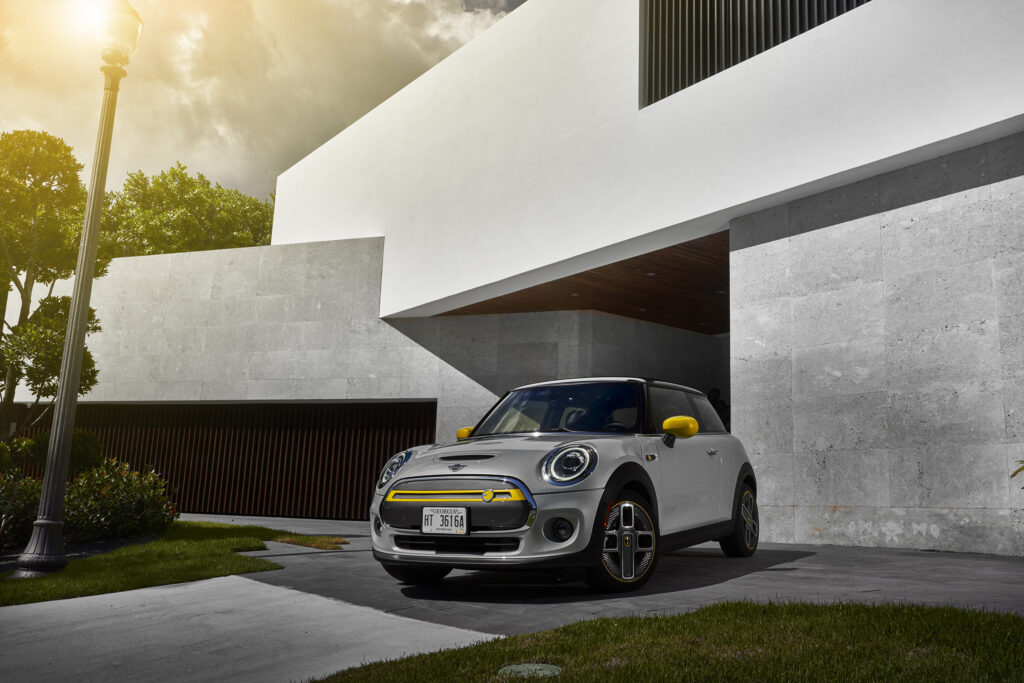

That applies to the ride, too, which is taut and without much travel, instead set up for the keep-you-connected feeling.
It’s mostly fun and in character, but it can get testing, especially on those myriad city streets with the sort of lack of TLC a cash-strapped Aussie council may lavish on 20-year-old bitumen, filled-in potholes and all.
Having a couple of hundred kilograms of batteries low down in the car keeps the body respectably flat through bends and there’s good grip to step up the fun factor.
Mini Electric party tricks
There’s a hint of 1950s jukebox in the Mini Electric.
Surrounding most of the giant circular centre console is a ring of LEDs that change colour depending on your driving and driving mode.
Get fiery and dial up Sport and that ring glows red. Take things easier and select Green and you’ll get – you guessed it – green.
Speaking of modes, buried within those retro-cool old-school toggle switches in the centre console are four to choose from:Green, Green+, Mid/Balanced and Sport.
The biggest change is to the throttle response and how quickly you can access the torque peak, the Sport mode having more of a trigger to the full 270Nm.



Green dulls things and makes for more relaxed motoring.
The only reason we can imagine you’d want to engage Green+ is if you’re running low on battery charge, which is described as “maximum range without comfort functions”. That’s because it disengages a lot of the ancillaries; the air-conditioning is switched off and you can’t even have heating, plus there will be no heated seats to keep derrieres warm. Maybe that’s where that 233km range claim came from…
Safety
The basics are there but the Mini Electric certainly doesn’t go above and beyond when it comes to active safety kit (the newer tech to help avoid a crash).
There’s speed sign recognition that displays the current limit on the head-up display (one of few to work with polarised sunglasses!). Plus there’s a form of city auto emergency braking the company says can provide full braking power, but it only operates up to 85km/h.


But the Mini Electric misses out on blind spot warning and active cruise control (to maintain a distance to the car in front).
Verdict
The Mini Electric is more fashion accessory than genuinely useful everyday EV. Sure, it zips you around town in a smile-inducing way and with much of the character of a regular Mini.
But it’s limited by its very obvious EV compromises, not the least of which is only travelling short hops between charges.
In such a fast-moving EV world it shows the Mini Electric is a follower rather than a gamechanger.
2020 Mini Electric specifications
Price: $59,900 drive-away
Basics: BEV, 4 seats, 2 doors, city hatchback, front-wheel drive
Range: 233km (claimed), 170km (realistic)
Battery capacity: 32.6kWh
Battery warranty: 8 years/100,000km
Energy consumption: 15.6kWh/100km
Motors: 1 front 135kW/270Nm
AC charging: 11kW, Type 2 plug
DC charging: 50kW, CCS combo plug
0-100km/h: 7.3 seconds

